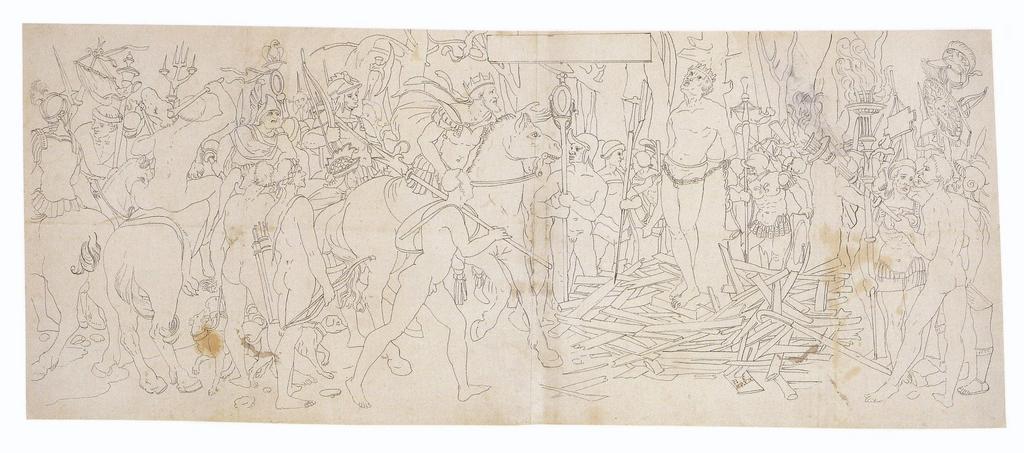MAKE A MEME
View Large Image

| View Original: | Croesus_at_the_Stake,_after_Hans_Holbein_the_Younger.jpg (2440x1080) | |||
| Download: | Original | Medium | Small | Thumb |
| Courtesy of: | commons.wikimedia.org | More Like This | ||
| Keywords: Croesus at the Stake, after Hans Holbein the Younger.jpg circa 1540 Pen ink 28 4 Ă— 70 2 cm Institution Kunstmuseum Basel accession number object history credit line its accompanying sheet depicting Sertorius indicate that they relate to Holbein's murals for the Council Chamber of Basel Town Hall Holbein began the work during the 1520s painting classical subjects such as this one After his return from a two-year visit to England 1526 “28 he was commissioned to resume the task but this time to provide murals based on Old Testament subjects in keeping with the new Reformation doctrines of the authorities The murals were one of several large-scale projects undertaken by Holbein that are now known only from a few fragments and preparatory sketches They were intended to remind the councillors of the need for wise and godly government This design portrays Croesus 595 “c 547 BC the famously wealthy last king of Lydia about to be burnt at the stake after defeat by the Persian king Cyrus in 547 BC According to legend as the pyre began to burn Croesus remembered the wise words of the statesman Solon that no one could be called happy until they were dead and he cried out Solon three times On hearing this Cyrus ordered the fire put out which could only be done with the intervention of Apollo and pardoned Croesus <br> References Christian MĂĽller; Stephan Kemperdick; Maryan Ainsworth; et al Hans Holbein the Younger The Basel Years 1515 “1532 Munich Prestel 2006 ISBN 9783791335803 nowrap pp 263 “64 412 Derek Wilson Hans Holbein Portrait of an Unknown Man London Pimlico 2006 ISBN 9781844139187 p 162 Christian MĂĽller; Stephan Kemperdick; Maryan Ainsworth; et al Hans Holbein the Younger The Basel Years 1515 “1532 Munich Prestel 2006 ISBN 9783791335803 PD-Art Kupferstichkabinett im Kunstmuseum Basel Croesus Works after Hans Holbein der JĂĽngere | ||||